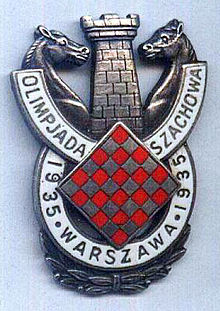Chess Olympiad 2010 venue and information
Tennis Sport Development Center is the venue of Khanty Mansiysk 2010 Chess Olympiad

Mr. Israel Gelfer in front of
the venue of the Chess Olympiad 2010
the venue of the Chess Olympiad 2010
During the visit he inspected the facilities at Khanty Mansiysk. The first stop was the Tennis Sport Development Center, which is the venue of the Olympiad. It has a capacity of 3500 spectators, with press conference center, and stable internet.
The Tennis Sport Development Center was inaugurated on September 24, 2008. The total area of the Center is 15558 sq.m and has seven courts with special cover. The central court (the playing hall of the Olympiad) has 3500 spectators seats.

The central court and venue of the Olympiad

The Tennis complex, general view

The meeting at Khanty Mansiysk during the World Cup

The campaign of Khanty Mansiysk during the Turin Olympiad
The bear was the mascot of the promotion, will we see it again at the Chess Olympiad 2010?
photo: newzealandchess.co.nz
The bear was the mascot of the promotion, will we see it again at the Chess Olympiad 2010?
photo: newzealandchess.co.nz
Final compositions of teams + captains should be sent, also electronically, no later than July 15th and in case not all names were given before May 20th should include all details for visas purposes according to the list which will be included into the official invitation.








